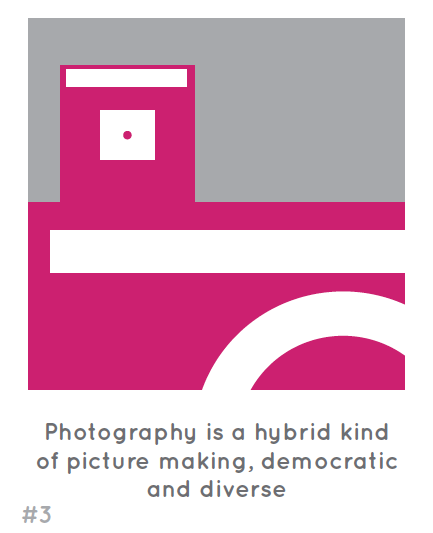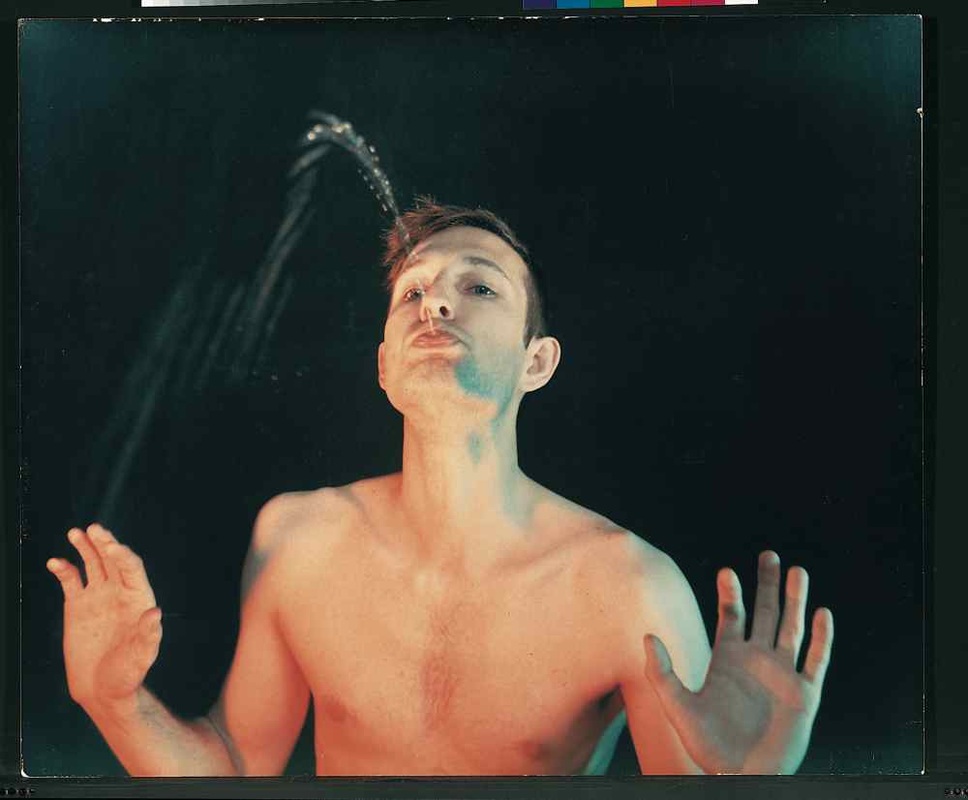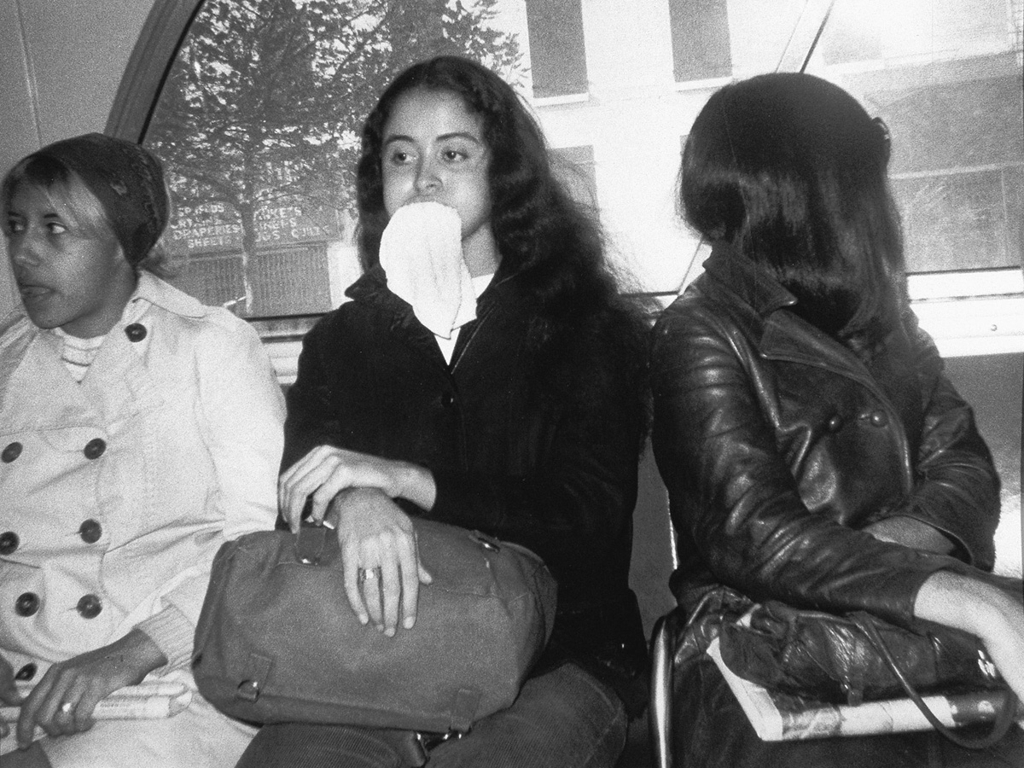Post 16 lesson plan: Performing for (and with) the Camera
|
From Jon Nicholls, Thomas Tallis School
Performance and live art is all the rage, largely due to the opening of Tate's new Switch House extension, a space designed to showcase art made since the 1960s. New galleries, like the Tanks, and existing spaces, like the Turbine Hall, enable audiences to engage with art that would otherwise feel restricted in conventional galleries. Nevertheless, Tate has also explored the relationship between performance art, live art, happenings etc. and lens based documentation in a recent exhibition entitled 'Performing for the Camera'.
Photography has been used to capture performances since its invention – from the stars of the Victorian stage to the art happenings of the 1960s, right up to today’s trend for selfies. This exhibition explores the relationship between the two forms, looking at how performance artists use photography and how photography is in itself a performance. I was lucky enough to attend Tate's Summer School this year. I've written a blog post about this experience and some of the lessons I took away from it. Chief among these was the determination to use some of the strategies employed by artists Anna Lucas and Alex Schady and to encourage my students to engage with the relationship between performance and lens based image making.
What follows, therefore, are some playful ideas and experiments that we have explored so far this term. |
Some initial questions:
- Why are light and lens based media often used to document performances and live events?
- Why might some performance artists not want their work to be documented?
- Is it possible to document a performance in such a way as to capture its spirit/atmosphere and, therefore, do it justice?
- Which artists have considered the lens based document to be integral to their performance based practice?
- In what sense is making a photograph or film a kind of performance in itself?
- How has social media and the use of smartphones influenced the way we perform for the camera?
Some research
This article by Liz Jobey is a great place to start. She quotes Allan Kaprow, inventor of the 'Happening', on the subject of artists' relationship with everyday life:
Artists must become preoccupied with and even dazzled by the space and objects of our everyday life, either our bodies, clothes, rooms or, if need be, the vastness of Forty-second Street… we should utilise the specific substances of sound, movements, people, odours, touch. Objects of every sort are materials for the new art: paint, chairs, food, electric and neon lights, smoke, water, old socks, a dog, movies, a thousand other things that will be discovered by the present generation of artists… Young artists of today need no longer say, “I am a painter” or “a poet” or “a dancer”. They are simply artists. All of life will be open to them.
-- Allan Kaprow
Writing in The Guardian about the Tate exhibition, critic Adrian Searle comments on the contemporary relationship between camera, photographer and viewer:
Photographic space becomes a theatre. Sometimes the photographer is witness, sometimes collaborator, sometimes the one in front as well as behind the camera. When we are photographed – mugshot, passport photo, press shot, selfie – we are all performing, for ourselves and for other people, if not for the camera. Nowadays we do it on YouTube and Instagram and Twitter, too, and any other platform you can think of. Which of my avatars shall I show you today?
-- Adrian Searle
Photography is a great tool for noticing, for paying attention to the miraculous in the everyday. Everything from brushing ones teeth to playing a Beethoven sonata might be considered a kind of performance and lens based media which, in the form of mobile devices, can be used to document (and create) both a mundane and a remarkable performance.
The Tate exhibition presents different kinds of relationships between camera and performance:
You might want to ask students to find out about some examples of performance documentation:
The Tate exhibition presents different kinds of relationships between camera and performance:
-
You might want to ask students to find out about some examples of performance documentation:
Threshold Concepts
|
The notion of performance in photography is tricky. Students might wonder about the relationship between photography and what they might think of as the antics of conceptual artists. Asking students to design and execute performances as a prelude to documentation with the camera might initiate a threshold experience for some, pushing them well outside their comfort zones. Whilst inducing a stressful experience isn't the point of this set of exercises, it is designed to encourage students to really question their relationship to photography, reminding them that it is a "hybrid kind of picture making, democratic and diverse." Photographs perform a range of functions in our lives and making art is only one of them. Linked to this is photography's relationship to time. We primarily take photos to remember, to stop time, to capture the ephemeral, to fix a live event. As a consequence, all photographs "remind us of things lost".
|
|
|
Additional video resources
This film about the pioneering work of Joan Jonas contains some wonderful footage of her work 'Song Delay' which is currently on display in the Switch House at Tate Modern. Simon Baker, Tate's photography curator,gives us an introduction to the exhibition 'Performing for the Camera' in this short video. And here is Romain Maider, one of the artists included in the Tate show, discussing his practice.
Some suggested activities:
The following activities are partly drawn largely from Tate's Summer School 2016 and are the brain children of artists Anna Lucas and Alex Schady. They are adapted to fit with the time constraints of school lessons. Other ideas are drawn from artists and photographers, like those above, for whom performance is integral to their practice.
Side by Side
This is a collaborative performance involving the selection, sequencing and display of a set of photographic images. One way of encouraging students to reflect on the editing process is to tun it into a kind of performance. How do you choose 5 pictures from hundreds? What happens when one photograph is placed next to another? Why this image and not that image? What happens when you make still images move? It's helpful to have a stack of images handy, either your own, the students' or a mixture. I used standard 4x6 prints from Photobox. It's helpful if they are all the same size. It's also a good idea to ask one member of the class to document the whole performance. The instructions might look something like this:
- In small groups (3-5 students) select 5 photographs from the pile.
- Discuss your choices. Consider your criteria.
- Once you are in agreement about the best 5 photographs, arrange them in a sequence that makes sense to you.
- One group at a time, arrange your 5 sequenced photographs in a line so that they are edge to edge (on the wall, floor, desk etc.) Decide as a whole group which group should follow which based on a potential link between the 5th image of the previous group and the 1st image in the next group.
- You should now have a single line of images with no gaps. In turns, take a series of photographs of the join between two images creating a kind of diptych.
- Present these new photographs as a looped slide show. You could experiment with filming the line of images as a tracking shot and even inserting additional photographs into the frame as the camera moves across the sequence.
|
|
|





















